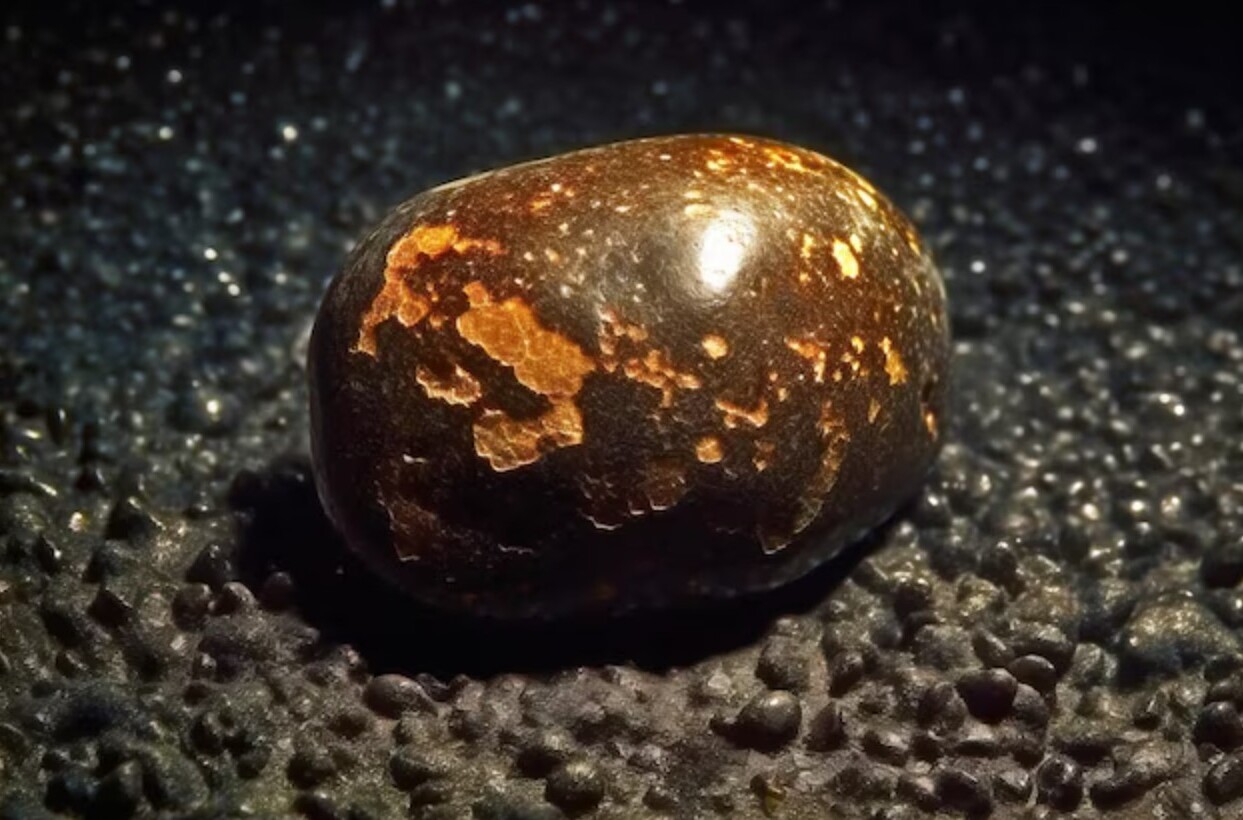
Do you consider yourself part of the cuttlefish vs squid debate? Or do you just want to know the difference between them? We’re proud to present to you the honorable cephalopods and their beautiful family! The most intelligent and widely diverse of the mollusks, cephalopods can be an octopus, a nautilus, some squids, and those adorable cuttlefish. The first signs of its emergence into nature’s life cycle were around five hundred million years ago. Although many of their kind have gone extinct, a few still exist today. Take note that these sea critters can hide well, and even live in the depths of the unknown sea. So if you have Thalassophobia, which is an intense fear of deep waters, it’s highly unlikely you’d wind up seeing them out and about.
Since the ocean holds many secrets, there could be more cephalopods out there to discover even after the abundance of findings during the 1800s. There’s nothing quite like the magic of giant sea monsters and legends of unusual creatures found in fairy tales, and the surprise is that some of these creatures could have been rare sightings of these wonderfully prehistoric babies.
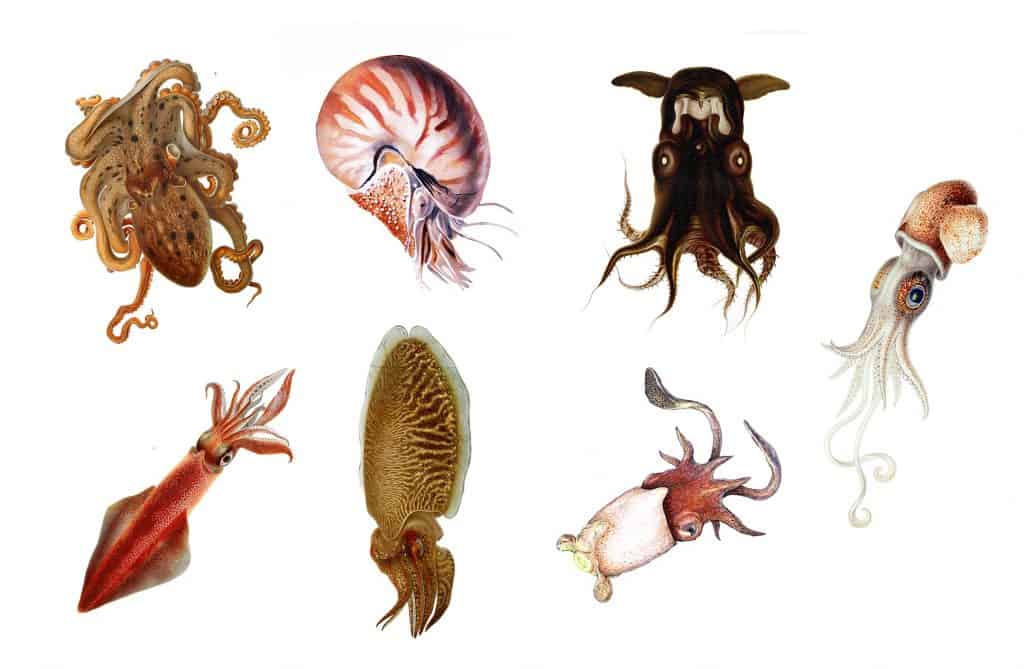
While cephalopods are definitely easy to spot, they’re also easy to misidentify. Some people could mistake an octopus for a cuttlefish or a squid. The only one that’s not that hard to define is the nautilus which keeps its hard shell to this day. Another one that’s not as easy but still pretty simple to set apart from the rest is the octopus, primarily because of its eight arms and bobbing head.
In this article, we’ll be discussing with you the difference between a squid and a cuttlefish, the two that seem to be just like twins. Thankfully, there are key identifiers to both of them and it’s only with the correct things to look out for that can you actually spot the difference.
Cuttlefish vs. Squid: Physical Attributes

In this battle of the cuttlefish vs the squid, you must first be aware of their physical differences. An option you can choose to spot the difference between a squid and a cuttlefish is observing their bodies.
Their nautilus remnants are different.
For this intense cuttlefish vs squid debate, both of them have different nautilus remnants. The squid’s former spiral shell remains inside their body as a translucent, elongated, and flexible stem called a pen. The cuttlefish’s version of the pen is called a cuttlebone. It’s wider than a pen and allows the cuttlefish to float with the help of its porous nature thanks to being made of calcium.
The lengths of their tentacles and arms are different.
The squid wins this round of the cuttlefish vs squid debate. While it may be difficult to notice if they’re moving, the tentacles of a squid are longer than its arms. A cuttlefish’s tentacles and arms are of the same length. The squid’s long tentacles allow it to reach and grab for its prey while the cuttlefish’s method of hunting prioritizes its ability to camouflage.
The cuttlefish has wavy pupils.
The cuttlefish’s W-shaped pupil differs from the squid’s or the octopus’ straight line. There have been theories regarding the purpose of the cuttlefish’s pupil. Some scientists claim that it’s improving its disguise. Others say it’s so that the cephalopod can see further into the distance. The most probable reason is that it manages the way light is distributed through their eyes.
Squid heads are longer.
A squid’s head and body take the form of a long cylindrical tube. It’s almost similar to an arrowhead and is often, but not always, triangular. The cuttlefish appears to be rounder or more oval-like compared to the squid. If you look at a cuttlefish closely, its body is even flatter than the squid as well.
Cuttlefish have more tentacles.
While the squid parties with only two tentacles, the cuttlefish has over ten of them surrounding its mouth. Cuttlefish tentacles are split into two groups. The first five of the tentacles are shorter and have rows of suckers on each limb. Unlike the squid which has two long tentacles, the cuttlefish uses one elongated tentacle to capture their prey.
Squids are bigger than cuttlefish.
Cuttlefishes are smaller than the average squid and even minuscule compared to the giant squid, a type of squid rarely found in the depths of the ocean. A regular squid can grow up to twenty-four inches while a common cuttlefish would only reach about sixteen inches.
They have similarities with octopuses which are opposite to the other.
The cephalopod’s most famous species is the octopus. The difference between the squid and cuttlefish is a lot more than the other two. Octopuses have eight arms while the other two have tentacles. While all three have the same number of hearts, which is three hearts, they still don’t quite match with the octopus. However, an interesting fact is that octopuses have similar traits to both equally. Both the squid and the octopus have slit pupils. Both the octopus and the cuttlefish developed advanced forms of adaptive camouflaging.
Cuttlefish vs. Squid: Behavior and Instincts
It’s important to note that they aren’t just different in body, but also their personalities. While they are both solitary creatures, their way of life has notable varieties.
The mating ritual of the cuttlefish happens directly in the mouth.
While male squids prefer wrapping an arm around the mantle cavity or mouth of their female partner, the cuttlefish mate by facing each other and squirts the sperm directly inside the mouth. Witnessing it first hand may look like two cuttlefishes innocently kissing each other, but that’s just about as innocent as it gets. Both the squid and the cuttlefish perish after their brood has been laid.
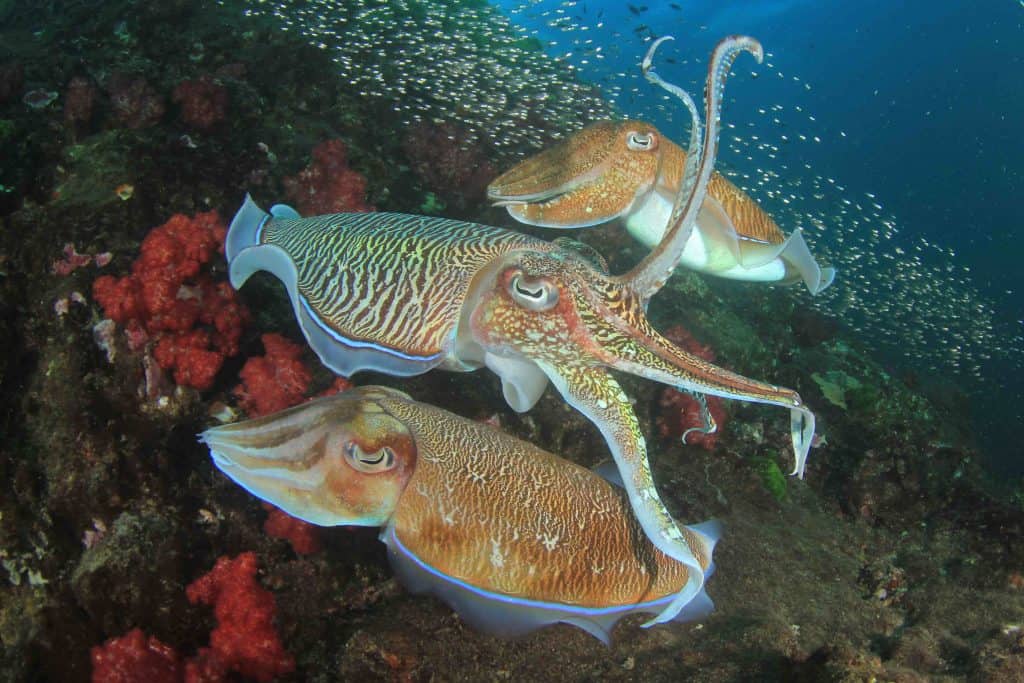
Their movements are opposites.
Cuttlefishes prefer to move slower than squids. They use their long fins to flow at a glacial pace considering the squid’s ability to use jet propulsion by filling their muscular mantle cavity with water and forcefully expelling it. Think of it like a pressurized coke bottle that suddenly flies everywhere.
A squid is quick on its tentacles.
A squid uses its tentacles to suction its prey’s body securely. The helplessly captured animal will then be pulled close to its beak-like mouth that pierces through the prey’s skin. Since squids often eat animals larger than themselves, they use their radula to grind the pieces further. A radula comprises mini rows of sturdy teeth.
Cuttlefishes take their prey by surprise.
When cuttlefish hunt, they use camouflage to lower their target’s defenses. Their color changes are thanks to their ability to use chromatophores. After locating their prey, they eject water to get a clearer shot and use their tentacles to snatch their well-deserved meal faster than you can blink.
Some cuttlefish have the ability to hypnotize.
Flashing repetitive lights on their prey, some cuttlefish can use hypnosis during their hunt, making them move closer to them. An example of this is the Broadclub Cuttlefish, the second largest of its kind that can weigh over ten kilograms.
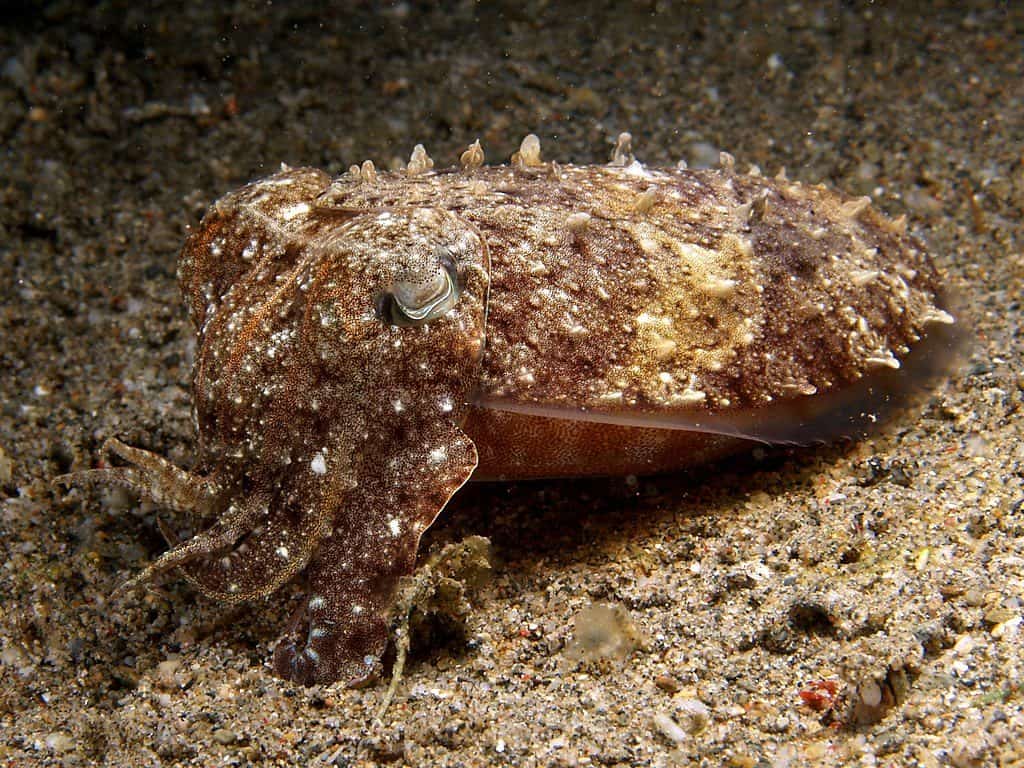
Cuttlefish vs. Squid: Dishes and Recipes
It’s also fun to note that people can eat these cephalopods. From their tentacles to their mantles, both the squid and cuttlefish have become a staple dish in many countries. Still, even in food preparation, there’s a major difference.

You can make a calamari dish out of squid.
One of the most well-known food staples in the world is the calamari dish. It’s made of squid that’s deep-fried in batter. Many people don’t know that calamari’s key ingredient is squid.
Rouille de Seiche is a traditional cuttlefish dish from France.
While many countries with many cultures eat cuttlefish, a notable one is the traditional Rouille de Seiche from Sète, France. It is tomato-based and with a velvet texture. It’s usually served with rice, pasta, or polenta.
You can find cuttlefish ink and squid ink in dishes.
While squid ink is often used in restaurants and homemade dishes, cuttlefish ink is an underrated ingredient. The cuttlefish’s ink is described to be gelatinous with a sleek finish. Compared to squid ink’s purplish color, cuttlefish ink is pure black.
Cuttlefish vs. Squid: Culture and Medicinal Properties
Culturally, squids and cuttlefish have had their hand in the development of human life from our legends and medicine.
The giant squid and colossal squid were once considered sea monsters.
Thanks to literature and oral storytelling, there have been stories of giant sea monsters rampaging across the ocean waves, bringing down boats, and gobbling up humans. Descriptions of the hydra in Historiae Animalium accurately describe the head and tails of a giant squid itself. Its mysterious nature is almost magical thanks to its rare appearances on the surface.
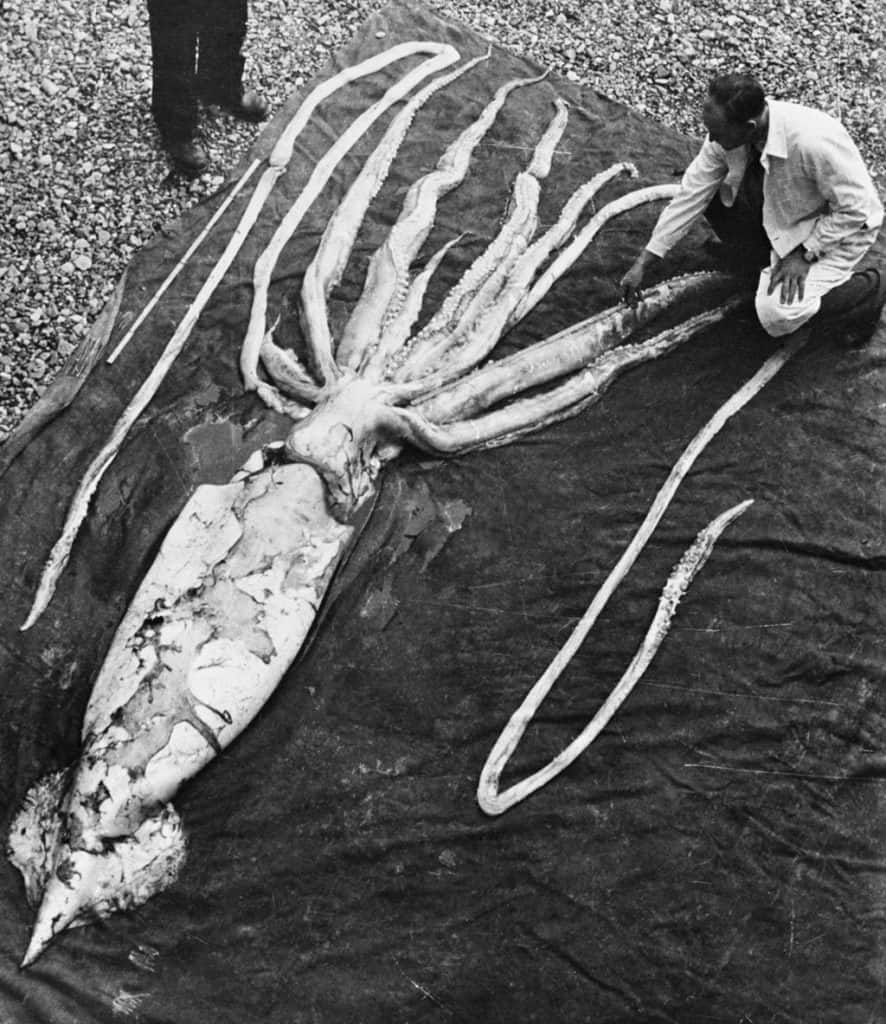
Cuttlebones are used in acupuncture.
The cuttlebone is pure calcium with salt properties. In traditional Chinese medicine, they call them Hai Piao Xiao. The cuttlebone can be used for ailments on the kidneys and stomach, and even to stop bleeding. As an ointment, the cuttlebone is used to aid in skin lesions, rashes, and others.
Cuttlefish prefer shallow depths when they breed.
Cuttlefish can usually be found anywhere. However, their seasonal behavior has them sneaking into deep water during the winter and breeding in shallow ones during spring and summer.
They have different meanings as animal totems.
Despite their similarities, their meanings as totems are completely different. Cuttlefish animal totems symbolize intelligence and adaptability regardless of many situations. While squid totems express productivity in the evening.
While these two are different and yet oddly the same, they’re both equally special. Both of them have had major effects on our way of life and have become fascinating topics of research for many scientists. Maybe one day, we will find more species of their kind due to technological advancement.
Was this page helpful?
Our commitment to delivering trustworthy and engaging content is at the heart of what we do. Each fact on our site is contributed by real users like you, bringing a wealth of diverse insights and information. To ensure the highest standards of accuracy and reliability, our dedicated editors meticulously review each submission. This process guarantees that the facts we share are not only fascinating but also credible. Trust in our commitment to quality and authenticity as you explore and learn with us.


